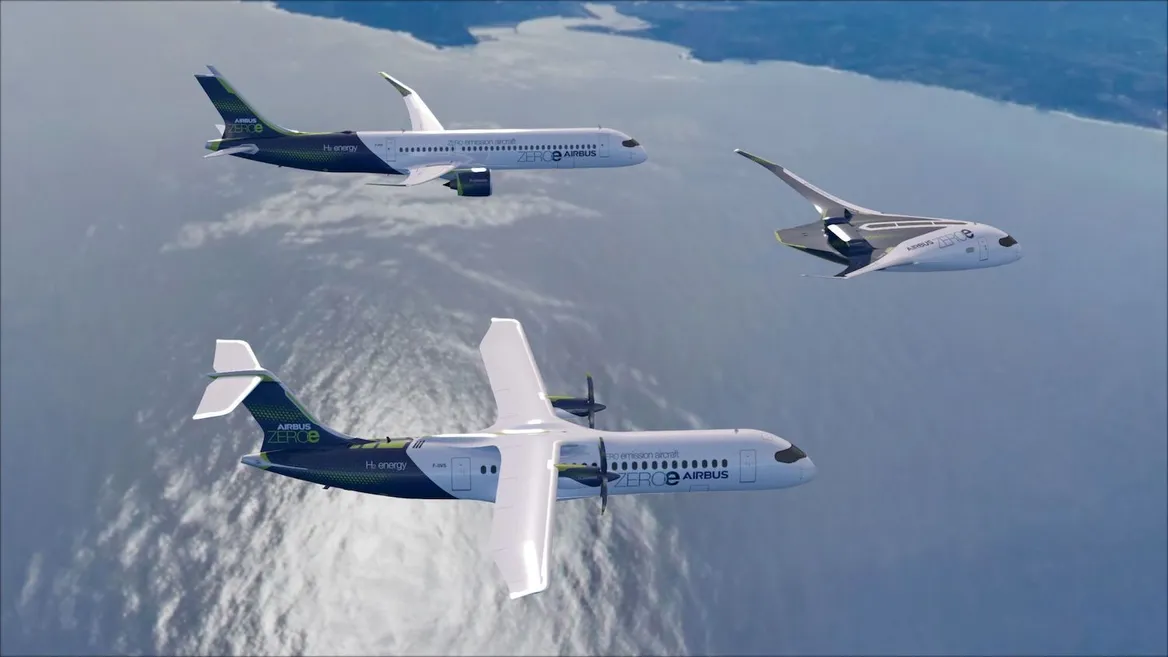2 Airplanes
2.1 Hydrogen Powered Airplanes
Galluchi
About one-third of total passenger traffic worldwide could be carried by planes burning liquid hydrogen, based on 2019 route data according to a white paper.
In the most optimistic scenario, aircraft powered by “green hydrogen” — produced using renewable electricity — could reduce total emissions from passenger flights by 31 percent compared to projected emissions levels in 2050.
Aviation contributes about 2.5 percent of global greenhouse gas emissions every year, primarily from burning petroleum-based jet fuel, or kerosene.
Some airlines are already chipping away at their emissions by blending their kerosene with small amounts of “sustainable aviation fuels,” or SAFs, which are primarily made today from used cooking oils and discarded animal fats. Producers and policymakers are pushing to drastically boost adoption of SAFs for commercial flights starting this decade, from about 26 million gallons every year to several billion gallons a year by 2030.
Yet while plant- and waste-based alternatives can be cleaner to produce than jet fuel, they still emit carbon dioxide when burned in engines. Hydrogen does not — hence the industry’s intensifying efforts to develop H2-powered aircraft. Hydrogen planes could capture a huge share of shorter flights, but not long trips.

Figure: Airbus Concept Planes
Liquid hydrogen-powered aircraft would be less energy-efficient and have a shorter range than their kerosene-powered counterparts — making them impractical for long-haul flights without more technology innovations. However, the zero-emission planes could still service a sizable share of passenger air travel.
A turboprop burning liquid hydrogen could transport 70 passengers up to 1,400 kilometers. A narrow-body aircraft could carry 165 passengers up to 3,400 kilometers. Hydrogen planes could service about 97 percent of the turboprop market and 71 percent of the narrow-body market.
Liquid hydrogen packs much less energy on a volume basis than kerosene does, so planes would have to store more of it to travel the same distance. The zero-carbon fuel must also be kept at around -250 degrees Celsius in heavy cryogenic tanks, further weighing down the plane. In the two Airbus designs, the main bodies of the planes are elongated to accommodate the extra fuel storage.
The world will need to build gigatons’ worth of additional wind, solar and other renewable energy capacity to produce enough green hydrogen to supply a zero-emission aircraft fleet — as well as to power the energy-intensive process of liquifying that hydrogen.
Drop-in Fuels
“Drop-in” fuels made of used cooking oil or forest residues represent less than 1 percent of total jet fuel demand. In Europe, aviation officials are pushing to accelerate the production and use of such fuels. The ReFuelEU Aviation proposal introduced last year would require that fuels delivered to European Union airports contain at least 2 percent SAF by 2025, ratcheting up to 63 percent by midcentury.
Galluchi (2022) Hydrogen-powered planes could handle a third of passenger air travel